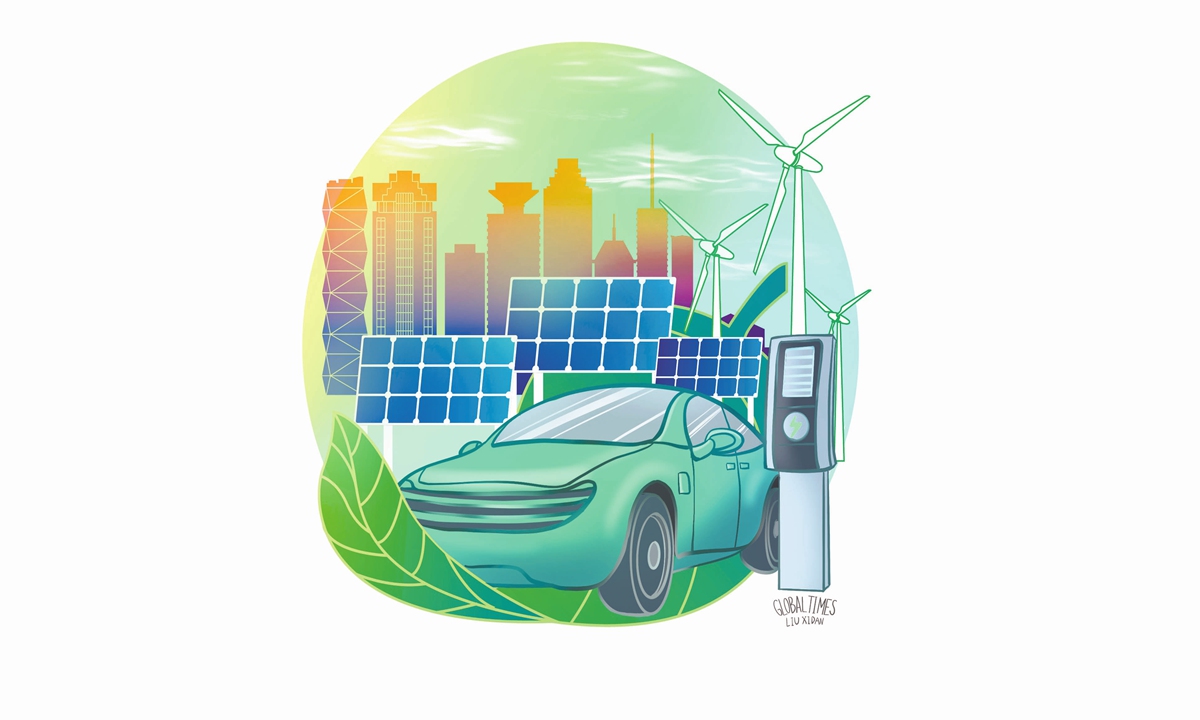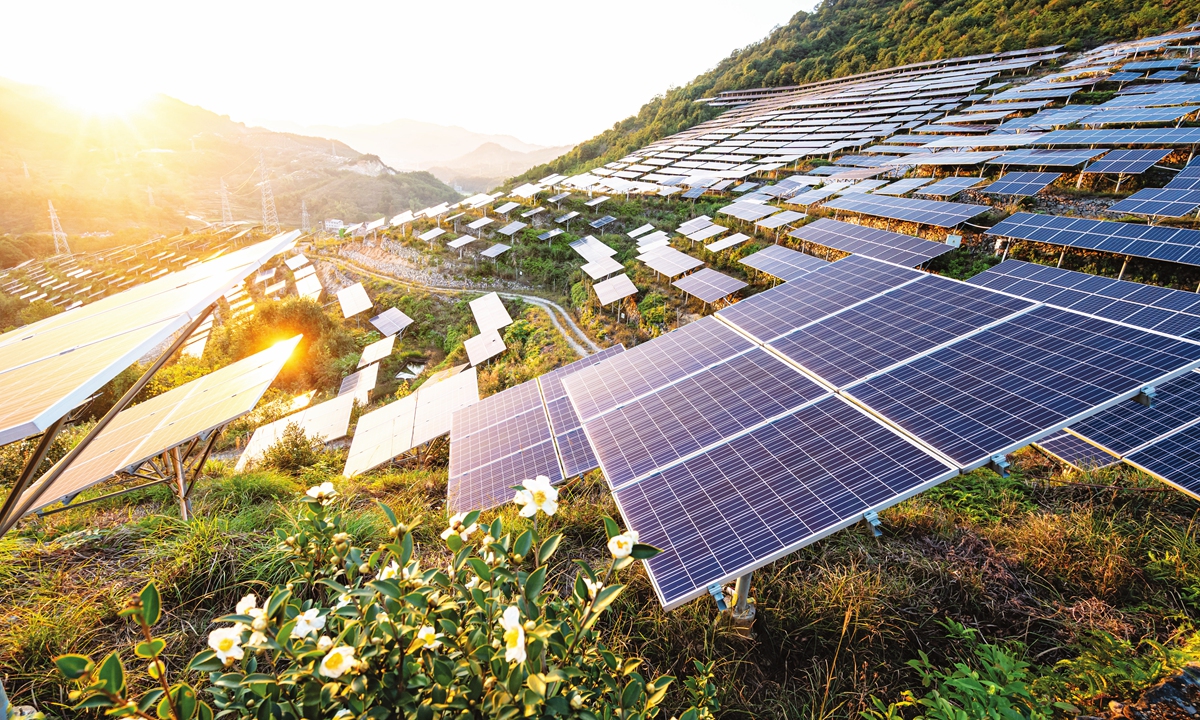
Illustration: Liu Xidan/GT
Reports by the World Bank indicate that in sub-Saharan Africa, about 600 million people, or approximately 53 percent of the region's population, live without access to electricity. Hundreds of millions more in urban cities have only limited or unreliable electricity. Furthermore, fossil fuels continue to dominate the energy supply and infrastructure in Africa. This is because, after gaining independence, most of these African countries developed energy infrastructures focused on non-renewable sources, despite the continent being rich in renewable/green energy resources. Thus, the false narrative of overcapacity from the Western-led countries to counter Beijing's "made in China" drive on new energy vehicles, photovoltaics and lithium batteries is also an attempt to hinder Africa's green energy production.
The Western-led overcapacity narrative is more about protecting their markets than focusing on global efforts to reduce carbon emissions. This comes at a time when fossil fuels continue to cause damage to our environment through carbon emissions.
However, keeping its promise of achieving carbon neutrality by 2060, China continues to make great progress in green energy production while exporting it to the world through the Belt and Road Initiative. According to the International Renewable Energy Agency, China continues to dominate the solar industry in terms of solar PV installed capacity.
This has influenced the growth of energy transitions to other countries and accelerated the reduction of the global carbon footprint.
In Africa, reports indicate that China has built and financed, from 2010 to 2020, approximately 96 projects to add to the continent's power generation capacity. These green energy projects are increasing electricity supply, improving energy security, reducing dependence on petroleum imports and mitigating the effects of climate change not only in Africa but across the world.
For instance, Kenya, in East Africa, is leading in the deployment of solar energy power generation. The 50 MW solar power station plant in Garissa County is currently one of the largest photovoltaic electricity plants in Africa. The project, financed by the Chinese government through concessional loans from the Export-Import Bank of China, was completed by the China Jiangxi Corporation for International Economic and Technical Co-operation.
The Garissa solar power plant hosts approximately 206,272 solar panels and occupies an estimated 210 acres. As a sustainable development project, the solar plant is estimated to address the power demand of 70,000 households (approximately 350,000 people, equivalent to about 50 percent of the population of Garissa) in Kenya. The solar plant has also increased the share of renewable energy on the grid to 93 percent, setting the stage for cheaper electricity in Kenya. Similarly, the Garissa solar power plant has reduced over 43,000 metric tons of carbon dioxide emissions annually, according to Kenya's Rural Electrification and Renewable Energy Corporation.
In South Africa, Power China signed a contract last year to build, operate and maintain a 123 MW solar plant that will provide electricity to at least 82,000 households when completed. This project is the first large-scale ground photovoltaic power plant signed by a Chinese enterprise in South Africa. It will also provide approximately 300 million kilowatt hours of clean electricity annually to the South African power grid and offer relief to residents from the almost two-decade-long electricity supply crisis, commonly known as load-shedding.
In Mali, Chinese company Sinohydro is also building a solar power plant in the village of Tiakadougou Dialakoro. The plant will have a peak capacity of 100 megawatts. In 2020, state-owned energy conglomerate China Energy Engineering Corp announced plans to develop 500 MW of solar generation capacity in Uganda in two phases by its China Gezhouba Group International Engineering subsidiary. In all these green projects, China continues to ensure that environmentally sustainable laws and policies are adhered to in the installations and generation of power through the PV/solar panels.
This shift to sustainable, clean energy solutions especially on solar energy, presents an enormous opportunity for Africa to address the challenges of the energy gap throughout the continent, climate change and to attain the 2030 agenda for Sustainable Development Goals on affordable and clean energy. China, unlike other traditional partners, is on the right path to helping Africa realize the continent's potential to generate at least 300 GW of clean energy by 2030.
Undeniably, the debate on so-called China's overcapacity holds no ground. Africa needs the much-produced solar panels to boost renewable energy in its grids, reduce carbon emissions and mitigate the devastating effects of climate change.
The author is the executive director of China-Africa Center at the Africa Policy Institute. opinion@globaltimes.com.cn



